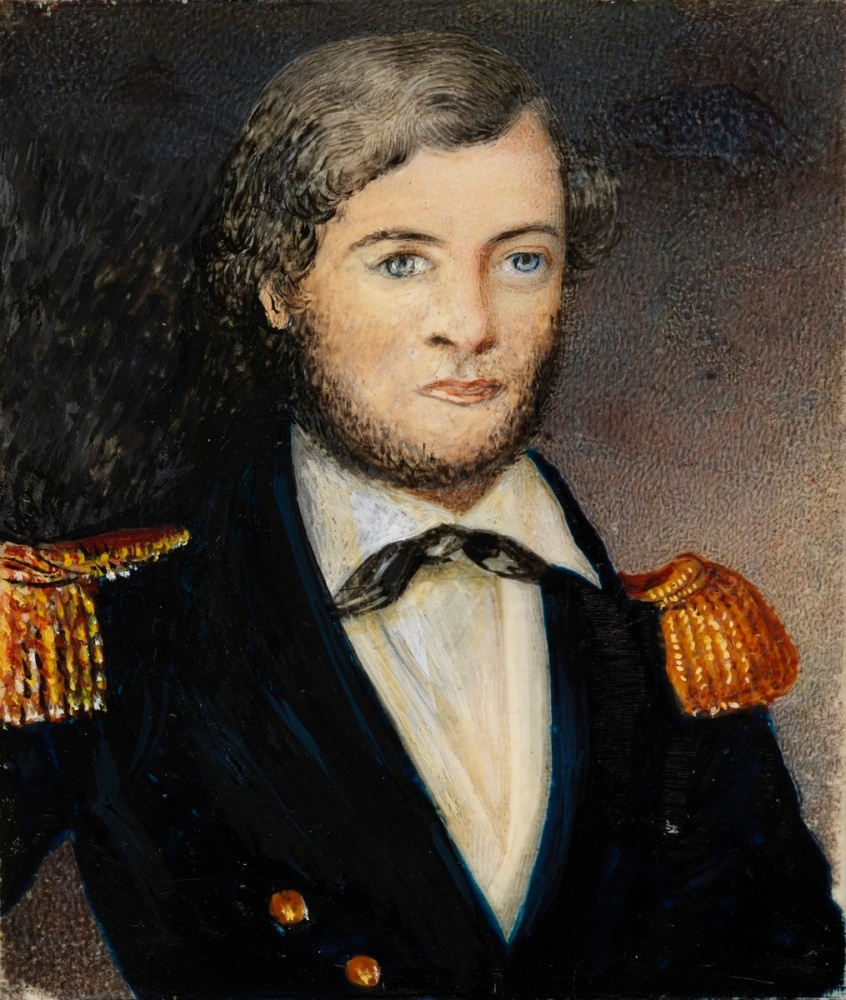John Lort Stokes, naval officer, was Charles Darwin's cabinmate on the Beagle voyage - not always an enviable position. After Darwin's death, Stokes penned a description of their evenings spent working at the large table at the centre, Stokes at his navigation charts and Darwin at his microscope:
It was often a very lively end of the little craft, and distressingly so to my old friend, who suffered greatly from sea-sickness. After, perhaps, an hour's work he would say to me, 'Old fellow, I must take the horizontal for it,' that being the best relief position from ship motion; a stretch out on one side of the table for some time would enable him to resume his labours for a while, when he had again to lie down. (LL 1: 224)
Despite Darwin's illness, the two got on well and continued to write to each other for some time after Darwin's return to England.
Already an experienced hand by the time he met Darwin, Stokes had been stationed on the Beagle since 1825. Before going back on board after their voyage, he attended the meeting of the Geological Society at which Darwin read his paper on the formation of coral islands. Stokes was sufficiently interested in Darwin's talk that he asked for a set of questions he could take with him to focus his observations, the responses to which he later sent back to Darwin:
Previous to my departure from England, I had the pleasure of heaving a valuable paper by my friend Mr. Darwin, on the formation of coral islands, read at the Geological Society; my attention being thus awakened to the subject, the interest of this important paper was to me greatly enhanced by a series of queries, kindly furnished by Mr. Darwin, and drawn up with a view to confirm or invalidate his views, his purpose being to elicit truth from a combination of well attested facts, and by inducing the research of others to further the objects of science.
Among these queries was the following:-`Are there masses of coral or beds of shells some yards above high water mark, on the coast fronting the barrier reef?' (Stokes 1846 1: 331)
Stokes spent his final voyage surveying Australasian waters, succeeding to the ship's command in 1841, and eventually returned to England in 1843. Shortly after, he unwittingly involved Darwin in an extremely awkward situation with the then governor of New Zealand, George Grey. Darwin had agreed to read over some proof sheets for Stokes' account of his travels, later published as Discoveries in Australia (1846). In the letter Darwin sent when he returned the proofs, Darwin referred to Grey's own travel account as a 'catalogue of mishaps and mismanagements' and described the latter's exploratory expedition as 'that of a set of School Boys'. Stokes accidentally left the letter among the pages when they went back to the printer, and somehow the letter made its way to the desk of the governor himself. Fortunately, Darwin managed to smooth matters over, and the whole incident led to George Grey offering to send observations about natural history in New Zealand, so no harm was done.
Stokes spent several years in England on half pay, apparently doing 'little but shoot and hunt' until the 1860s, when he was appointed rear-admiral, and finally admiral in 1877.
ODNB article: https://doi.org/10.1093/ref:odnb/26557



